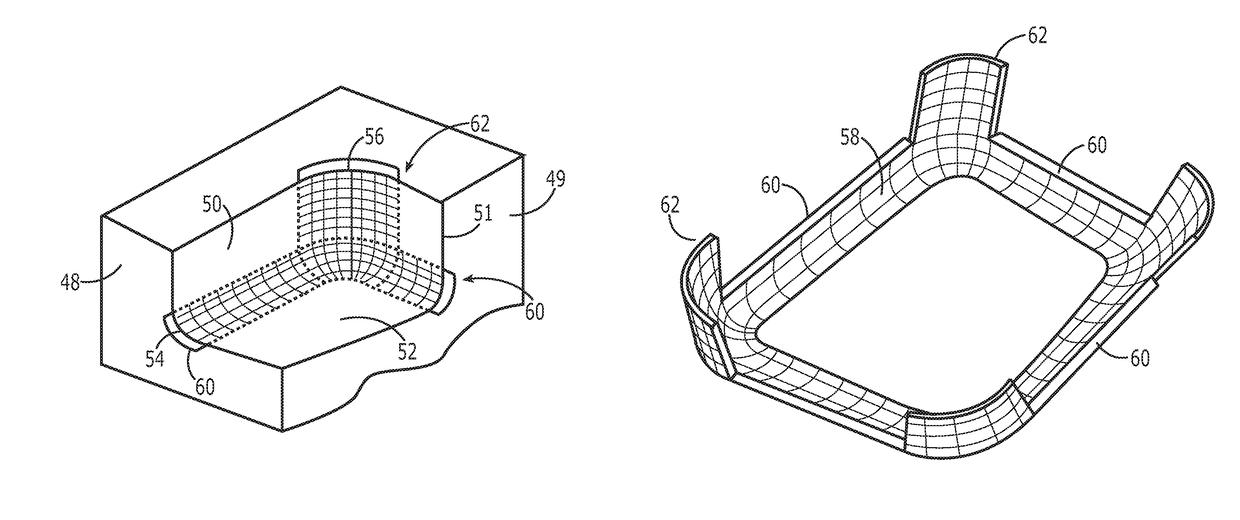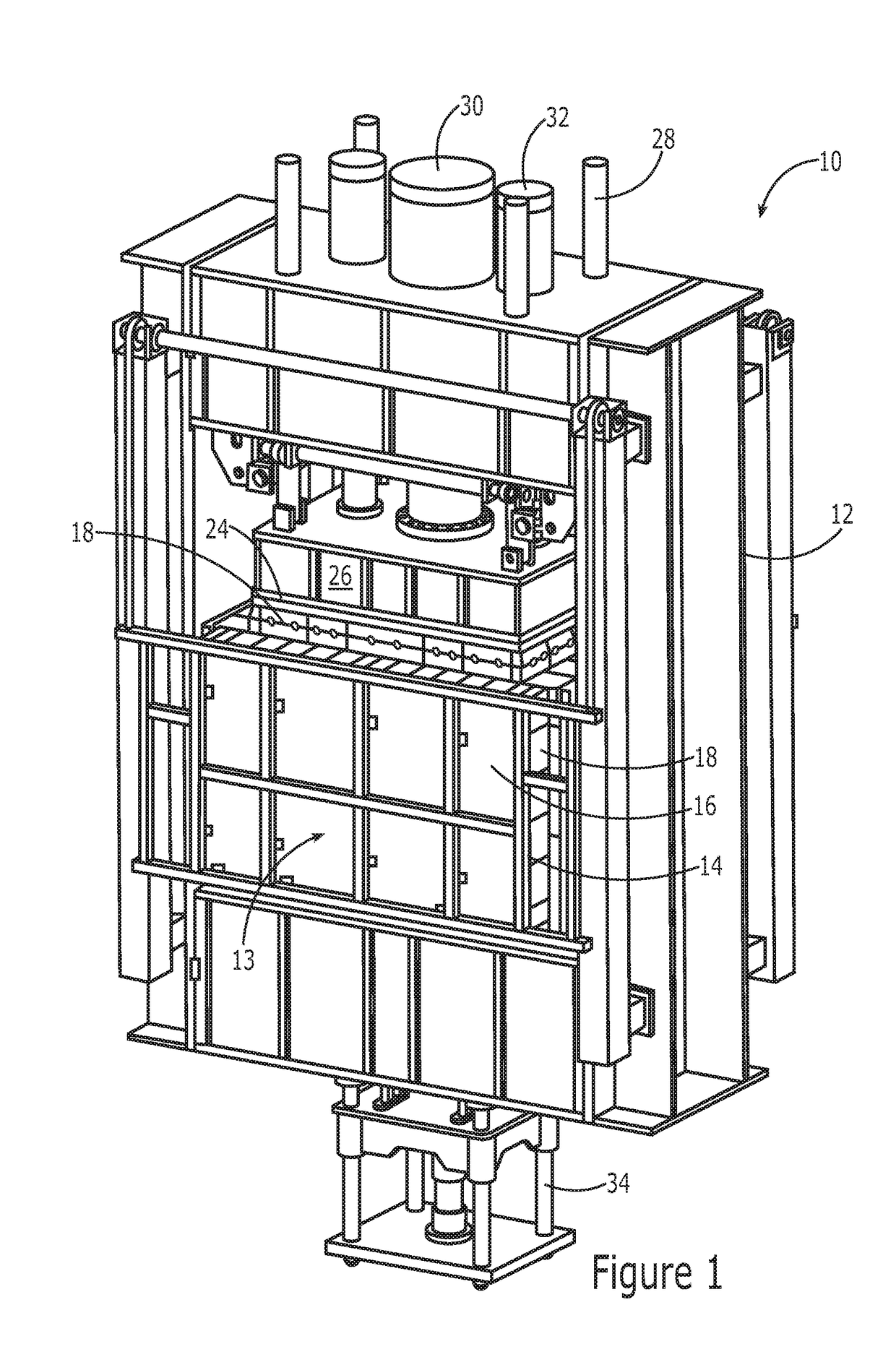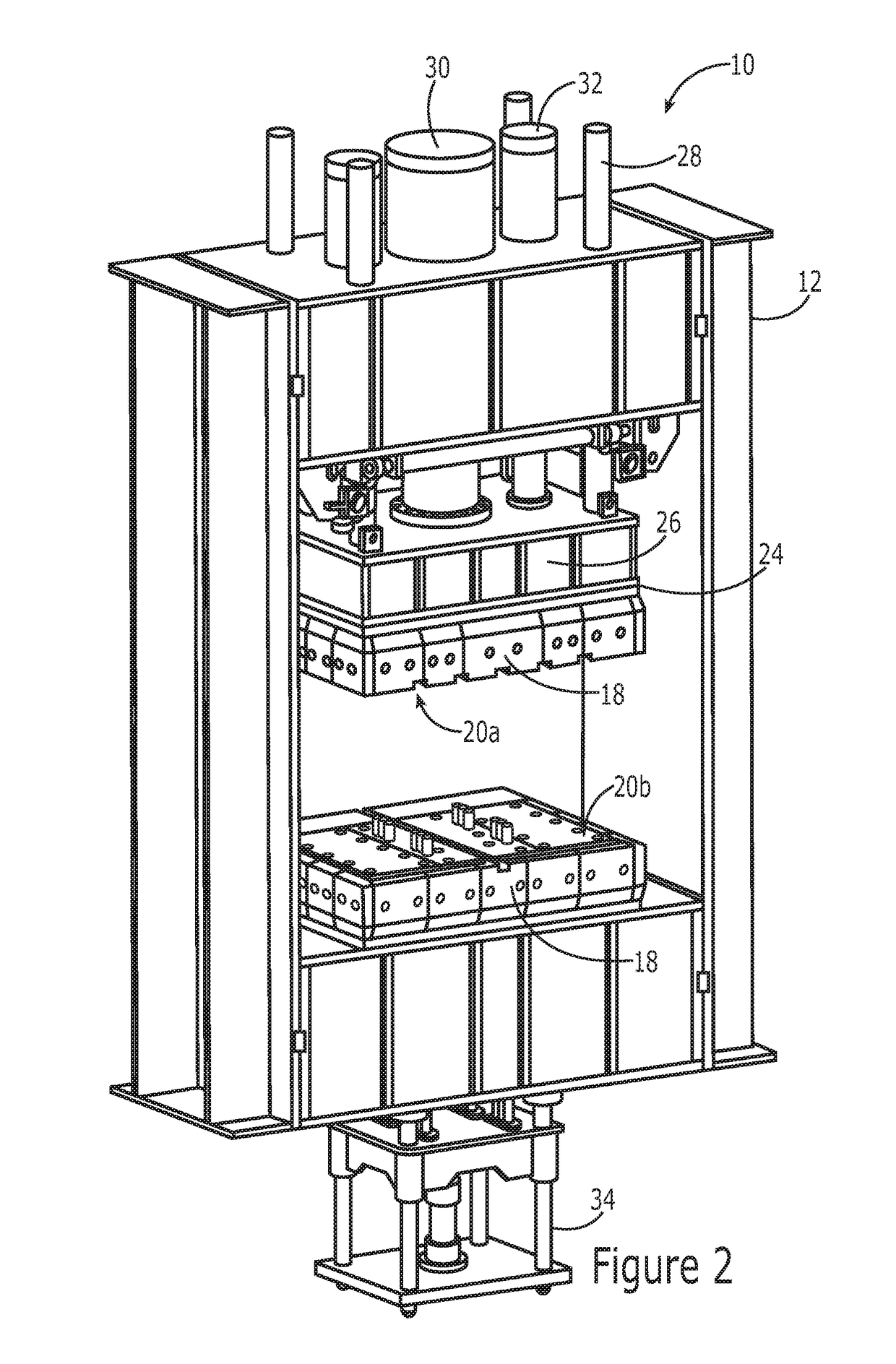Ceramic die including a plurality of preferentially located fibers and associated method of constructing a ceramic die
a ceramic die and fiber technology, applied in the direction of extrusion dies, manufacturing tools, shaping tools, etc., can solve the problems of relatively short life, limited effect, and high cost of dies formed of metal alloys, so as to reduce the likelihood of cracking and the likelihood of flaking of the mold surface, reduce the overall cost, and reduce the likelihood of cracking and flaking
- Summary
- Abstract
- Description
- Claims
- Application Information
AI Technical Summary
Benefits of technology
Problems solved by technology
Method used
Image
Examples
Embodiment Construction
[0024]The present disclosure now will be described more fully hereinafter with reference to the accompanying drawings, in which some, but not all aspects are shown. Indeed, the disclosure may be embodied in many different forms and should not be construed as limited to the aspects set forth herein. Rather, these aspects are provided so that this disclosure will satisfy applicable legal requirements. Like numbers refer to like elements throughout.
[0025]A ceramic die for a hot press is provided, along with a method of constructing a ceramic die. The ceramic die is selectively reinforced in a manner that reduces the likelihood of cracking and the likelihood of flaking of the mold surface. Thus, the ceramic die of an example embodiment has a longer lifetime in order to reduce the overall costs associated with superplastic forming operations. In this regard, a hot press employing the ceramic die needs to be taken off line less frequently in order to replace a ceramic die that has failed,...
PUM
| Property | Measurement | Unit |
|---|---|---|
| temperatures | aaaaa | aaaaa |
| temperatures | aaaaa | aaaaa |
| temperature | aaaaa | aaaaa |
Abstract
Description
Claims
Application Information
 Login to View More
Login to View More - R&D
- Intellectual Property
- Life Sciences
- Materials
- Tech Scout
- Unparalleled Data Quality
- Higher Quality Content
- 60% Fewer Hallucinations
Browse by: Latest US Patents, China's latest patents, Technical Efficacy Thesaurus, Application Domain, Technology Topic, Popular Technical Reports.
© 2025 PatSnap. All rights reserved.Legal|Privacy policy|Modern Slavery Act Transparency Statement|Sitemap|About US| Contact US: help@patsnap.com



